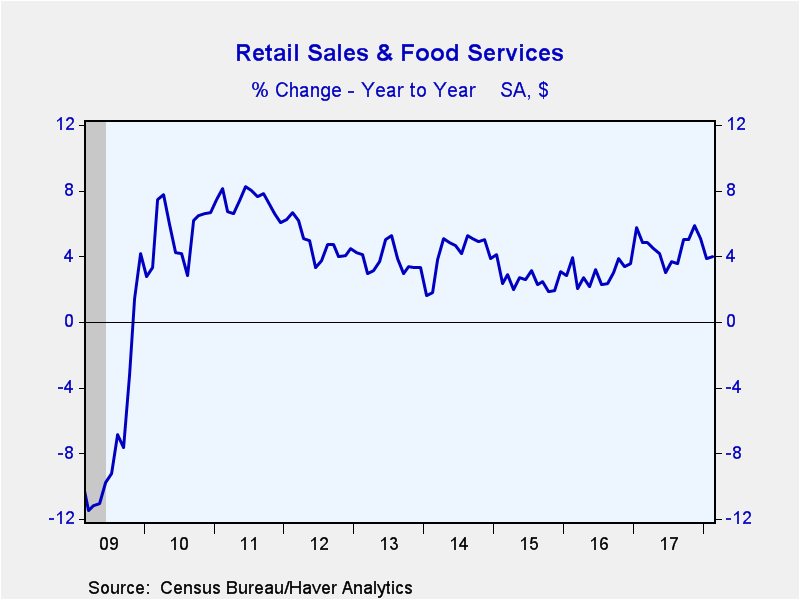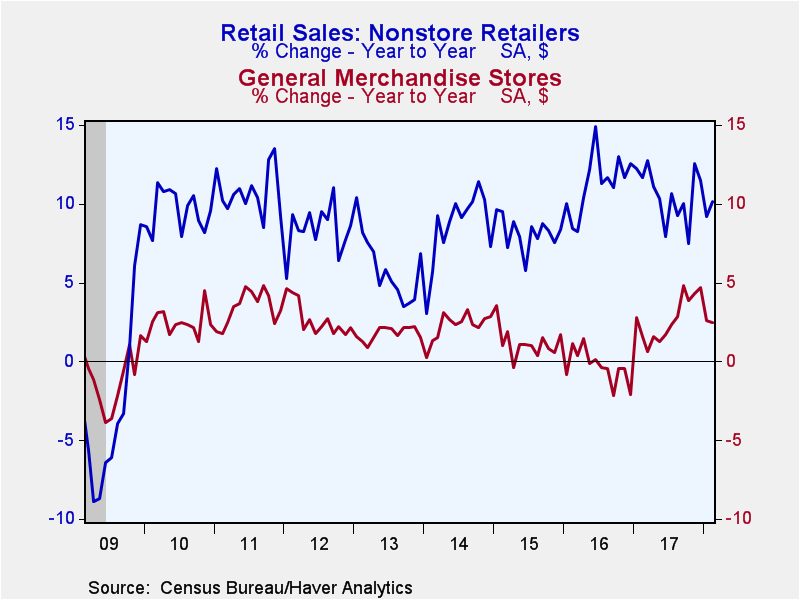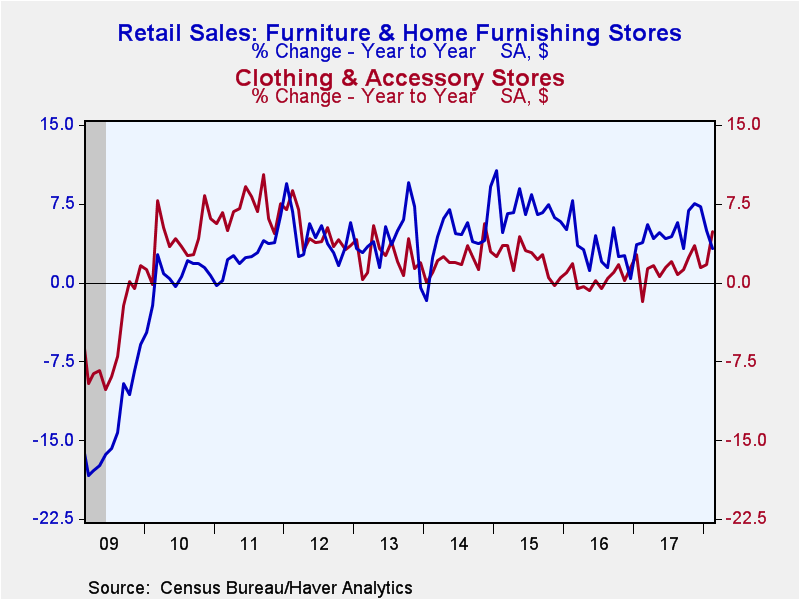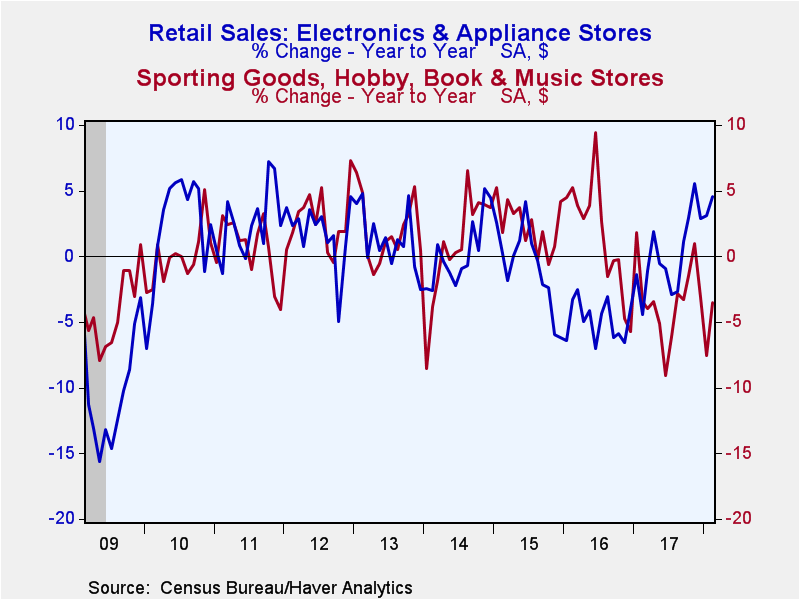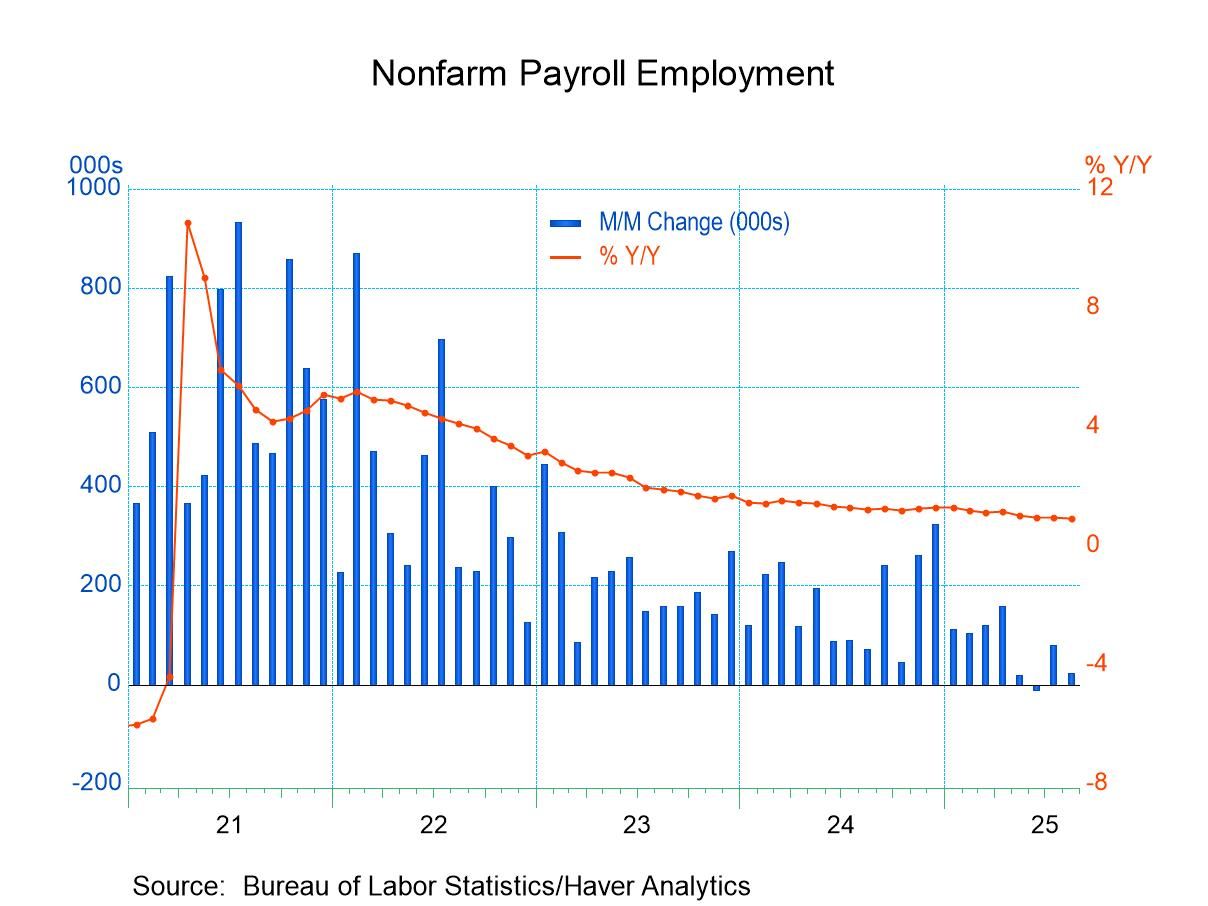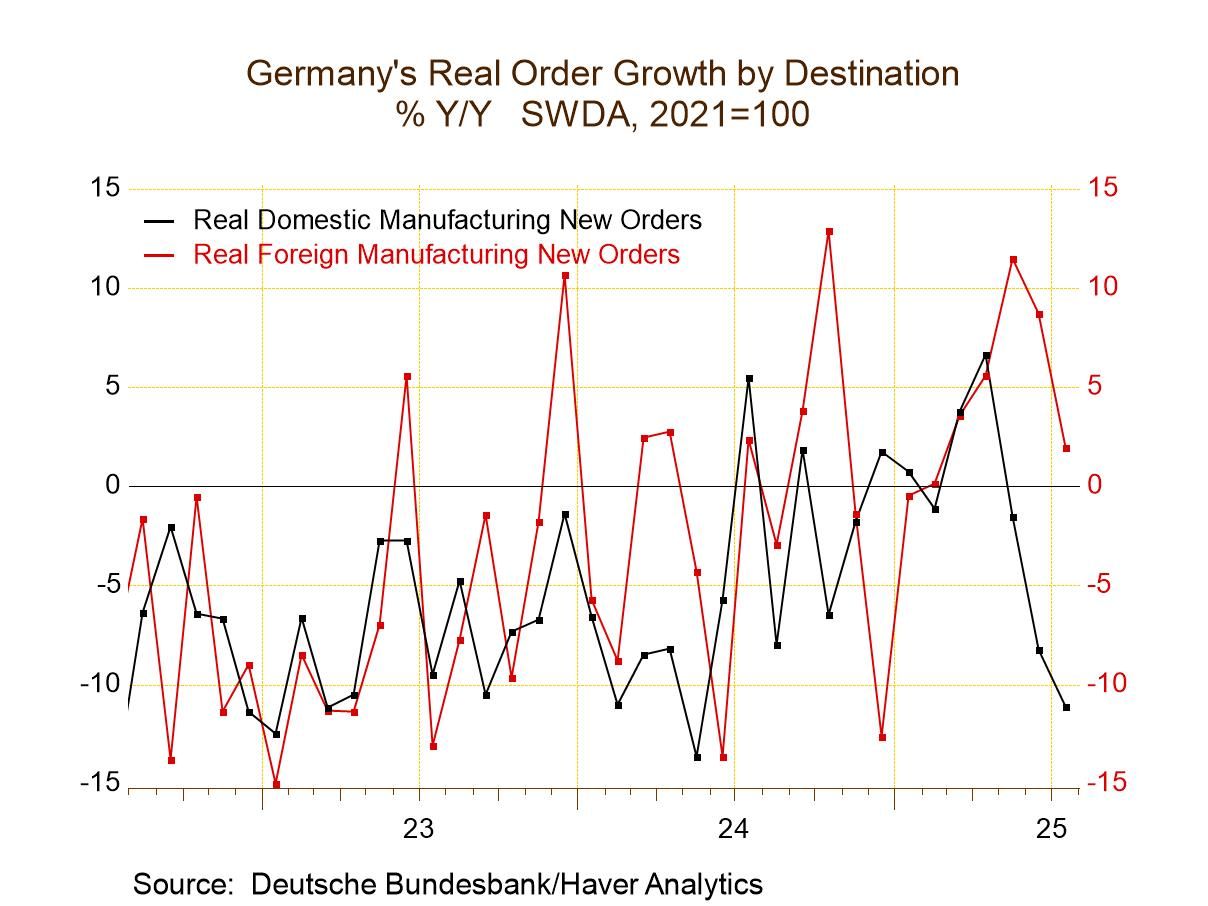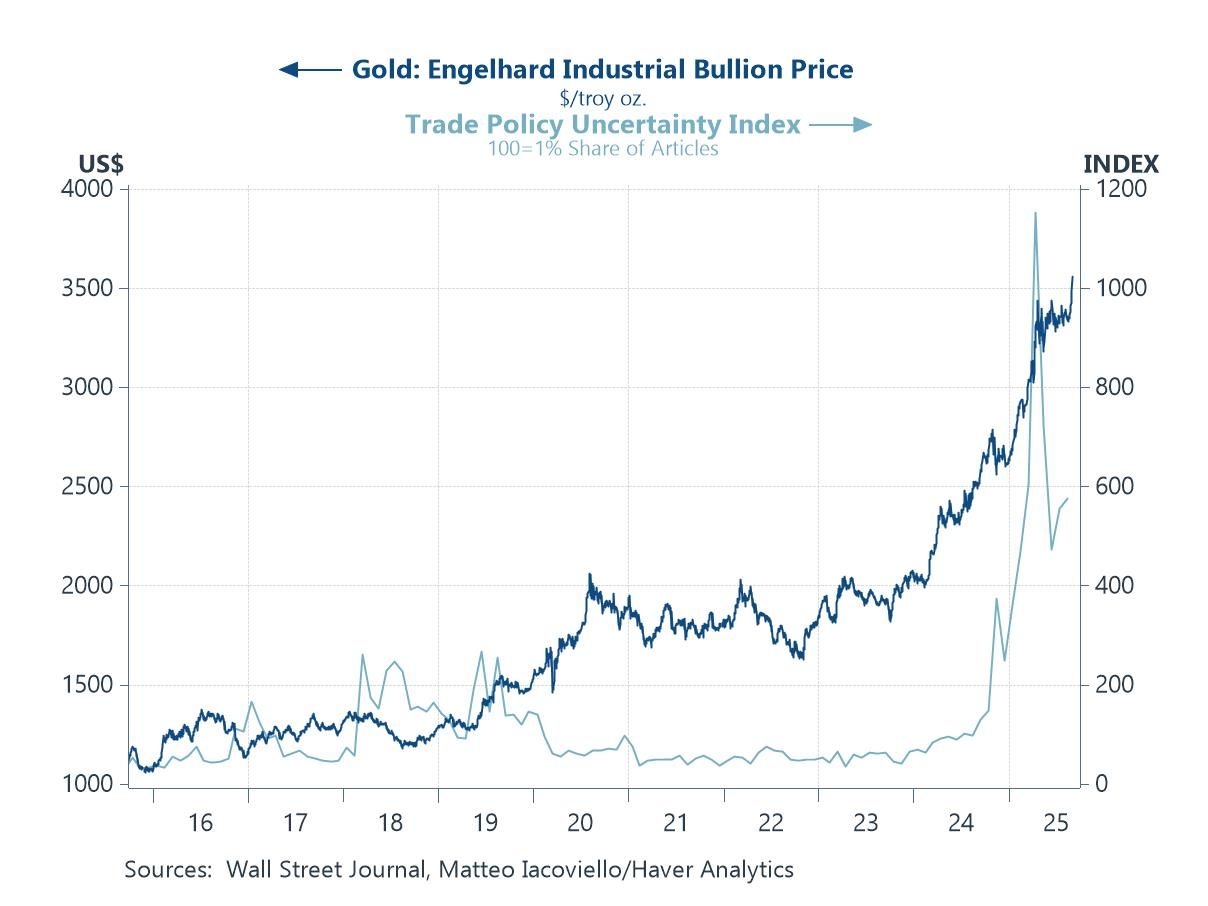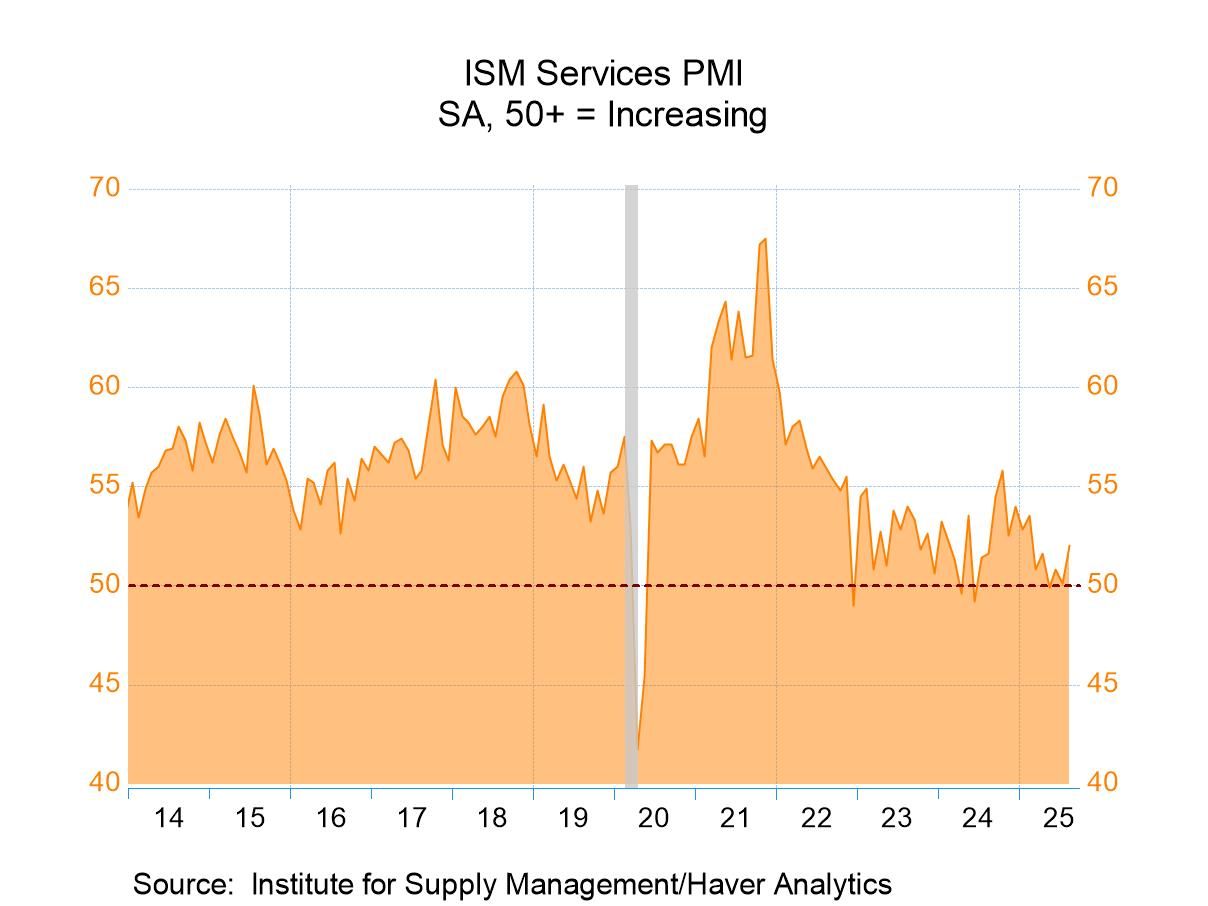 Global| Mar 14 2018
Global| Mar 14 2018U.S. Retail Sales Decline for Third Consecutive Month
by:Tom Moeller
|in:Economy in Brief
Summary
Total retail sales slipped 0.1% (+4.0% y/y) during February, following two months of similar decline. January's result was revised from -0.3% reported initially. A 0.4% increase had been expected in the Action Economics Forecast [...]
Total retail sales slipped 0.1% (+4.0% y/y) during February, following two months of similar decline. January's result was revised from -0.3% reported initially. A 0.4% increase had been expected in the Action Economics Forecast Survey. Excluding motor vehicles and parts, retail sales improved 0.2% (4.4% y/y) following a 0.1% rise, revised from a slight decline. A 0.4% increase had been expected.
Sales of discretionary items were mixed last month. Sales of motor vehicles & parts fell 0.9% (+2.3% y/y), down for the fourth consecutive month. It compared to a 0.5% decline in unit auto sales reported earlier this month. Sales at furniture & home furnishing stores weakened 0.8% (+3.3% y/y), off for the third straight month. General merchandise store sales fell 0.4% (+2.4% y/y) and reversed the prior month's rise. Electronics appliance store sales eased 0.1% (+4.5% y/y) following a 1.1% jump. Countering these declines was a 2.2% increase (-3.5% y/y) in sporting goods, hobby, book & music store purchases which followed three straight months of lower sales. Building materials & garden equipment store sales increased 1.9% (4.6% y/y) and reversed January's decline. Sales of nonstore retailers improved 1.0% (10.1% y/y) after a 0.9% shortfall. Clothing & accessory store sales improved 0.4% (4.9% y/y) after a 0.9% increase.
Gasoline service station sales fell 1.2% (+7.9 y/y) as pump prices declined, following a 1.9% rise.
Sales of nondiscretionary items softened last month. Health & personal care store sales fell 0.4% (+0.4% y/y), the fourth straight monthly shortfall. Food & beverage store sales eased slightly (+3.2% y/y) for a second straight month.
Food service & drinking establishment sales improved 0.2% (2.7% y/y) after a 0.1 % uptick.
The retail sales data can be found in Haver's USECON database. The Action Economics forecast is in the AS1REPNA database.
Rising Public Debt to GDP Can Harm Economic Growth from the Federal Reserve Bank of Dallas is available here.
| Retail Spending (% chg) | Feb | Jan | Dec | Feb Y/Y | 2017 | 2016 | 2015 |
|---|---|---|---|---|---|---|---|
| Total Retail Sales & Food Services | -0.1 | -0.1 | -0.1 | 4.0 | 4.2 | 3.2 | 2.6 |
| Excluding Autos | 0.2 | 0.1 | -0.0 | 4.4 | 4.2 | 3.0 | 1.4 |
| Non-Auto Less Gasoline | 0.3 | -0.2 | 0.0 | 4.0 | 3.6 | 3.9 | 4.2 |
| Retail Sales | -0.1 | -0.1 | -0.2 | 4.0 | 4.4 | 2.9 | 1.9 |
| Motor Vehicle & Parts | -0.9 | -0.9 | -0.2 | 2.3 | 4.1 | 4.1 | 7.3 |
| Retail Less Autos | 0.1 | 0.1 | -0.2 | 4.7 | 4.5 | 2.5 | 0.4 |
| Gasoline Stations | -1.2 | 1.9 | 0.1 | 7.9 | 8.9 | -5.7 | -17.6 |
| Food Service & Drinking Places Sales | 0.2 | 0.1 | 0.8 | 2.7 | 2.8 | 5.9 | 8.1 |
Tom Moeller
AuthorMore in Author Profile »Prior to joining Haver Analytics in 2000, Mr. Moeller worked as the Economist at Chancellor Capital Management from 1985 to 1999. There, he developed comprehensive economic forecasts and interpreted economic data for equity and fixed income portfolio managers. Also at Chancellor, Mr. Moeller worked as an equity analyst and was responsible for researching and rating companies in the economically sensitive automobile and housing industries for investment in Chancellor’s equity portfolio. Prior to joining Chancellor, Mr. Moeller was an Economist at Citibank from 1979 to 1984. He also analyzed pricing behavior in the metals industry for the Council on Wage and Price Stability in Washington, D.C. In 1999, Mr. Moeller received the award for most accurate forecast from the Forecasters' Club of New York. From 1990 to 1992 he was President of the New York Association for Business Economists. Mr. Moeller earned an M.B.A. in Finance from Fordham University, where he graduated in 1987. He holds a Bachelor of Arts in Economics from George Washington University.


